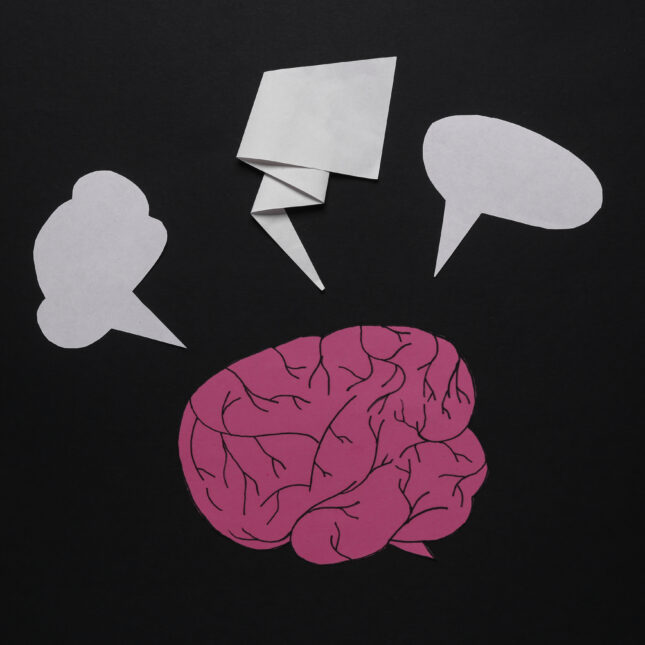
Schizophrenia is a poorly understood illness, but scientists now have greater insight into one of the disorder’s hallmarks, auditory hallucinations, thanks to new research published Thursday.
People with schizophrenia often “hear” voices and sounds even when there are none — up to 80% of people with the mental illness have auditory hallucinations. Scientists have theorized that this happens when a person with schizophrenia struggles to recognize inner speech as self-generated. But nobody had been able to fully explain the mechanisms behind this phenomenon until now.
“If you look into the cognitive neuroscience research on auditory hallucinations, they always talk about the patients losing the self, losing their agency, that they may have a breakdown in the inhibition function that separates the external world and internal world,” said Xing Tian, the study’s lead author and an associate professor of Neural and Cognitive Sciences at NYU Shanghai. “But something has to generate these ‘weird feelings.’”
The study, published in PLOS Biology, is the latest encouraging news for schizophrenia research, after the Food and Drug Administration recently approved a drug that could radically alter how doctors treat the condition. The researchers hope that a deeper mechanistic understanding of the illness will also help expand treatment options beyond drugs. These recent scientific advances could dramatically change the lives of the nearly 4 million people with schizophrenia in the United States.
“It’s very worthwhile knowing exactly what aspect of that mechanism is not normal in people with schizophrenia,” said Tom Whitford, a psychology professor at the University of New South Wales in Australia who was not involved in the research. “You can’t treat what you don’t understand, and this absence of understanding has stymied the development of new treatments, which haven’t really changed much in 40 years.”
To better understand auditory hallucinations, it’s necessary to illuminate some of the brain’s functioning. When someone performs an action, their brain sends a copy of the corresponding neural data from the motor cortex over to the sensory system.
This is partly to help the brain distinguish between experiences caused by its own actions and those from external sources. If the call is coming from inside the house, the brain zips over signals that tamp down the sensory response. Scientists theorize that this process cultivated a sense of agency for humans — and animals, as scientists discovered these processes by surgically inverting fly heads and fish eyes.
One way to illustrate the impact of this mechanism is tickling. Even the most ticklish person in the world cannot tickle themselves.
“When I speak, I get primary motor discharges that are actually moving my mouth and tongue and larynx,” said Whitford. “The idea is you have a copy of those motor signals. With me, I expect to hear a nasal Australian accent.”
For people with schizophrenia, these expectations are skewed. Passivity experiences, another disease hallmark, lead many people to believe that an external agent is controlling them. This loss of agency lends credence to research showing disrupted motor signals in people with schizophrenia. While Tian and his colleagues agree this disruption leaves an opening for these auditory hallucinations to occur, their recent study suggests misfiring signals also add elements in addition to their dysregulated suppression.
To confirm this hypothesis, the researchers tested three groups of 56 people total: a control group without schizophrenia, people with the disorder but without auditory hallucinations, and people with the disorder and auditory hallucinations.
Using an EEG, the team captured changes in brain functioning when individuals were about to talk — both when preparing to speak without knowing the contents and when preparing to speak a specific syllable. These different situations allowed the researchers to parse the different motor signals typically involved in suppression. What they found was that every person with schizophrenia displayed “broken” and “noisy” motor signals, and that the interplay of these wonky signals fed into each other and led to hallucinations.
Tian said the team’s follow-up experiments with larger sample sizes that further probe these mechanisms have corroborated the findings. He hopes this research will help scientists provide non-pharmacological alternatives to schizophrenia treatment, such as transcranial magnetic stimulation.
“Some patients are really resistant to drugs — maybe that’s because it’s hard to modulate the function network [with them],” he said. “If our theory is right, then using a noninvasive neuromodulation technique can alleviate the hallucinations.”






